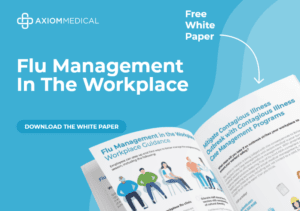Workplace anxiety can take many forms, but one of the most disruptive is tunnel vision anxiety. When this happens, your focus narrows so tightly around a single issue—like a looming deadline, a mistake, or a perceived threat—that you lose sight of the bigger picture. Tasks pile up, communication falters, and productivity dips.
This blog explores the signs of tunnel vision anxiety in the workplace, what causes it, and practical ways individuals and teams can manage it.
What Is Tunnel Vision Anxiety?
Tunnel vision anxiety is the experience of narrowing your focus to the point where other priorities, perspectives, or details fade away. Instead of weighing multiple options or thinking creatively, you become locked in on a single issue.
In the workplace, this might show up as:
- Obsessing over one mistake and replaying it in your mind.
- Fixating on an upcoming presentation to the point of neglecting other tasks.
- Struggling to hear or process feedback because you’re focused on defending one idea.
- Missing broader strategic goals because your attention is stuck on small details.
Signs of Tunnel Vision Anxiety in the Workplace
Recognizing the signs early can help you break the cycle before it takes over.
Personal indicators:
- Difficulty shifting attention between tasks.
- Feeling “stuck” and unable to brainstorm alternatives.
- Heightened physical symptoms like racing thoughts, rapid heartbeat, or shallow breathing.
- A sense of dread even when nothing is immediately wrong.
Team indicators:
- Meetings dominated by a single issue, with little discussion of other priorities.
- Overemphasis on urgent but unimportant tasks.
- Colleagues seeming withdrawn, distracted, or less open to new ideas.
Why Tunnel Vision Anxiety Happens at Work
Several overlapping factors contribute to this workplace pattern:
- The brain’s stress response
Anxiety narrows focus by design—it’s how humans evolved to handle threats. But in today’s workplace, those “threats” are often performance reviews, heavy workloads, or communication breakdowns. - Unclear expectations
When job roles, success metrics, or priorities aren’t defined, employees often latch onto what feels urgent instead of what’s important. - Past experiences
A history of being criticized or punished for mistakes can make you hyper-focused on avoiding failure, even if it slows progress. - Organizational culture
Lack of psychological safety, where people don’t feel comfortable sharing struggles, can make tunnel vision worse. Without support, anxiety compounds.
How to Manage Tunnel Vision Anxiety
Addressing tunnel vision requires both individual techniques and supportive workplace practices.
For Individuals
- Pause and reset: Take micro-breaks to breathe, stretch, or step away from your desk. Even one minute can help broaden focus.
- Zoom out questions: Ask yourself, “What’s the bigger goal? What am I missing?” to reframe your perspective.
- Break tasks down: Use prioritization tools like the Eisenhower Matrix (urgent vs. important) to avoid spiraling into one task.
- Change environments: Physically moving to a new space or switching contexts helps loosen the “tunnel.”
- Reframe self-talk: Replace catastrophic thoughts (“I can’t mess this up or it’s over”) with balanced ones (“I can correct mistakes if they happen”).
For Teams and Leaders
- Encourage psychological safety: Make it acceptable to admit stress or ask for help.
- Use structured check-ins: Ask during meetings, “What are we not seeing?” to prompt wider awareness.
- Visualize priorities: Dashboards, project timelines, or whiteboards remind everyone of the bigger picture.
- Model healthy behavior: Leaders who show they can pause, recalibrate, and seek feedback set a healthier tone.
- Streamline workloads: Limit unnecessary interruptions and clarify what’s urgent vs. what can wait.
- Know when to seek professional help: If tunnel vision anxiety becomes chronic, triggers physical symptoms, or severely impacts work, it may be time to reach out to employee assistance programs, counseling, or therapy for added support.
Learn More in Our Upcoming Webinar
To take a deeper dive into this topic, join our upcoming session:
“Anxiety Tunnel Vision: Clearing the Fog in High-Stress Environments,” featuring Dr. Les Kertay, clinical psychologist and workplace mental health expert.
In this webinar, you’ll learn:
- How anxiety reshapes focus, decision-making, and communication.
- Practical strategies to reset under pressure.
- Ways leaders can bring calm and clarity to their teams.
Register now to clear the fog, sharpen your focus, and lead with confidence.










